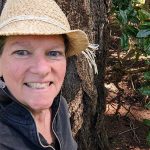Seattle pioneered the general strike, which is worth commemorating on Labor Day.
Labor Day was created by the United States Congress in 1894 after deadly and brutal clashes nationwide between workers and those who controlled working conditions. These days, Labor Day celebrations center around a three-day weekend, barbeques and picnics, last-minute summer road trips, and gatherings of friends and family. It is also a chance to go to the state fair and ride the rides, or to catch one more outdoor live concert.
But what is it, exactly, that we are celebrating?
For the Seattle area, one striking moment in 1919 – five days to be exact – marked a pivotal period for workers’ rights which was about just that – a citywide labor strike known as a general strike where all unionized workers walked off their jobs.
Word of the strike spread fast, and this event became known as the first general strike to take place in the nation. It shut down the city for those five days.
It was not, though, a violent event. It was peaceful and initiated by shipyard workers who were asking for fair wages. Other workers joined them in solidarity and as sympathizers.
Looking back, this event demonstrated a few aspects of Seattle’s culture – grit and determination – which grew from hardworking individuals who chose the Puget Sound region to make a better life for themselves – as well as to prosper – and this focused determination has led to today’s ongoing struggle between workers and business leaders for fair pay and working conditions.
So, enjoy your long weekend, picnics and ball games, and know that people over the years have worked hard so that you can now take that extra day off. And, remember to reflect on the benefits and challenges facing today’s generation of hardworking Pacific Northwestern urbanists.

Linda Hanlon
Linda Hanlon is the Lead Editor of The Urbanist. She cares about community-building and sharing smart ideas between communities, affordable housing, and active transportation. Safety, affordability, and access for all – regardless of age or physical ability – are starting points for her when thinking about livability. She lives in Port Townsend on the north Olympic Peninsula, the ancestral lands and home of the S’Klallam people.
